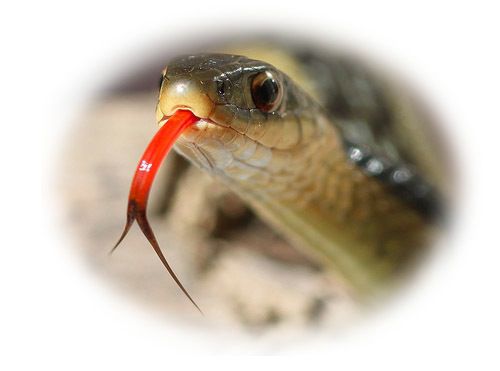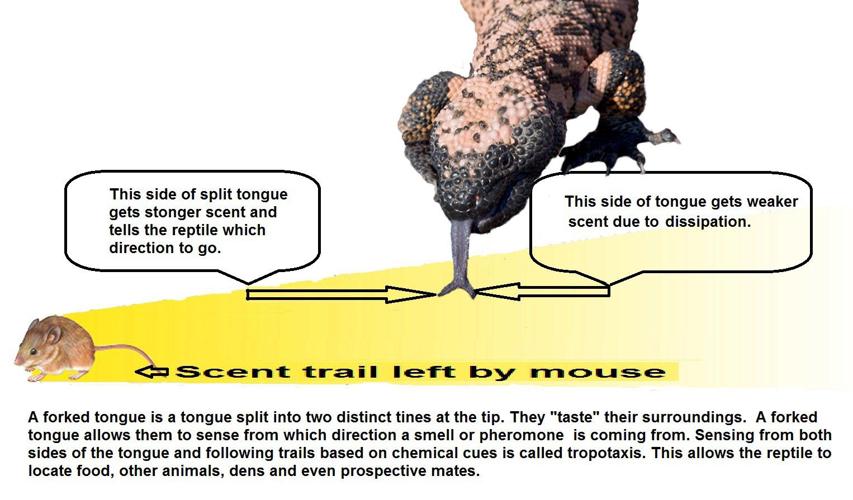A bird of prey, like a hawk or an eagle, soaring high in the sky has an unlimited field of vision and relies on its eyesight and hearing to “sense” its world. What about the snake or lizard? How far can it see? Well, being close to the ground, its line of vision extends only to the next bush or rock that blocks its view. Seeing a mouse ten feet away is almost impossible, but finding a mouse ten feet away is very important. How do you find a mate? You don’t hear snakes advertising for a mate by singing a love song like the birds or howling to the moon like a coyote.
The Solution: Olfaction!
Olfaction is the senseof smell. This sense is mediated by specialized sensory cells of the nasal cavity of most mammals. Most mammals and reptiles have two distinct olfactory systems—the main olfactory system, which detects odors, and the accessory olfactory system, used mainly to detect pheromones.
Pheromones are naturally occurring, odorless substances the body excretes externally, conveying an airborne signal that provides information to, and triggers responses from, the opposite sex of the same species.
Snakes and some lizards such as the Gila Monster are equipped with a forked tongue. The tongueis split into two distinct tines at the tip. These are not used to speak or even savor the flavor (taste) of a meal, but rather to “sense” the surroundings. A forked tongue senses from which direction a smell or pheromone is coming from by being able to determine that the chemical clue left behind is stronger on one side of the tongue than the other. Sensing from both sides of the tongue and following trails based on chemical cues is called tropotaxis.
The tongue is flicked out of the mouth regularly to sample the chemical environment. This form of chemical sampling allows these animals to sense chemicals, which cannot be detected by simply using the olfactory system. This increased ability to sense chemicals has allowed for heightened abilities to identify prey, recognize kin, choose mates, locate shelters, and follow trails.
Look at the garter snake in the photo. Even with its mouth closed, the snake can stick out its tongue. That's because there's a space in its upper jaw for the tongue to fit through. So out shoots the tongue, flicking up and down. Why? So it can pick up scents from the air and ground. Then the tongue slips back into the mouth.
There are two openings on the roof of the snake's mouth. They lead to a very sensitive spot called the Jacobson's organ. The snake touches its tongue to this organ, rubbing off the scents it has collected. The organ checks out the smells and sends a message to the brain. Then the snake knows if a meal, mate, or enemy is nearby.
But why is the tongue forked? So the snake can smell "in stereo"! Each point on the tip of the tongue fits into one of the openings to the Jacobson's organ. If the odor is stronger on one side, the snake can tell which direction the odor is coming from. This comes in handy for tracking prey, or following the trail of a potential mate.
For us humans, to “speak with forked tongue” is considered bad behavior but to have a forked tongue for a reptile is a tool for survival.




